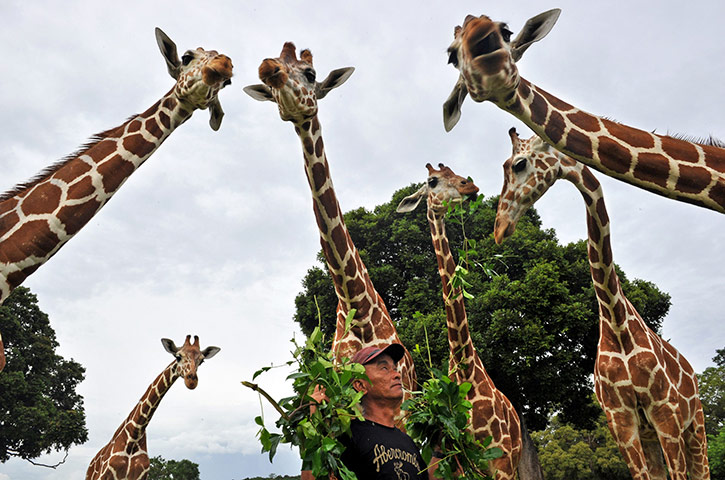TOP STORIES
Disease hinders reintroduction of water voles The semi-aquatic mammals are vulnerable to infection by a range of diseases that also infect humans, including giardia, cryptosporidium and leptospirosis.
The semi-aquatic mammals are vulnerable to infection by a range of diseases that also infect humans, including giardia, cryptosporidium and leptospirosis.
Researchers found that the diseases seem to be more prevalent amongst the rodents that have been released into the wild as part of reintroduction projects. In some cases reintroduced water voles were found to be nearly seven times as susceptible to diseases such as leptospirosis than existing resident populations.
Biologists from the Wildlife Conservation Unit at Oxford University, who wrote the report for the People's Trust for Endangered Species, believe this extra burden of disease is hampering efforts to restore populations of water voles in parts of the country.
Red squirrel could be extinct in two decades as numbers fall by 50% in last 50 years (and hedgehogs aren't far behind)
 The red squirrel faces extinction in the next two decades as its population has dropped by half in the past 50 years, warn researchers.
The red squirrel faces extinction in the next two decades as its population has dropped by half in the past 50 years, warn researchers.Efforts through wildlife biodiversity action plans to save British mammals have failed to halt the decline in numbers of red squirrels, as well as hedgehogs, Scottish wildcats and dormice.
Red squirrel populations have been hit by invasive grey squirrels, which compete with reds for food and carry a disease which is fatal to their native cousins.
… The omens for the red squirrel have also not been helped by the discovery in Scotland in 2005 of the squirrel pox virus, carried by grey squirrels.
The disease had previously been confined to England, where it has been one of the causes of the huge reduction in the number of red squirrels.
25 Sept 2011
C Parsons
>>> FULL ARTICLE
UCLA Scientists Find H1N1 Flu Virus Prevalent In Animals In Africa
UCLA life scientists and their colleagues have discovered the first evidence of the H1N1 virus in animals in Africa. In one village in northern Cameroon, a staggering 89 percent of the pigs studied had been exposed to the H1N1 virus, commonly known as the swine flu.
"I was amazed that virtually every pig in this village was exposed," said Thomas B. Smith, director of UCLA's Center for Tropical Research and the senior author of the research. "Africa is ground zero for a new pandemic. Many people are in poor health there, and disease can spread very rapidly without authorities knowing about it."
H1N1 triggered a human pandemic in the spring of 2009, infecting people in more than 200 countries. In the U.S., it led to an estimated 60 million illnesses, 270,000 hospitalizations and 12,500 deaths, according to the Centers for Disease Control. The virus, known scientifically as Influenza A (H1N1), is made up of genetic elements of swine, avian and human influenza viruses. The pigs in Cameroon, the researchers say, were infected by humans.
"The pigs were running wild in that area," said lead author Kevin Njabo, a researcher in UCLA's department of ecology and evolutionary biology and associate director of the Center for Tropical Research. "I was shocked when we found out it was H1N1. Any virus in any part of the world can reach another continent within days by air travel."
25 Sept 2011
>>> FULL ARTICLE
OTHER WILDLIFE HEALTH RELATED NEWS
Photo courtesy of The Guardian
 Brandon emus die in 1st Vt. case of EEE (Brandon, Vermont, USA - Map It
Brandon emus die in 1st Vt. case of EEE (Brandon, Vermont, USA - Map It  )
)- Trace amounts of crude oil harm fish
- Invasive species menace Florida ecosystem (Florida, USA)
- DNA confirms existence of NZ bird thought extinct (New Zealand)
- Nebraska asks hunters to look for deer diseases (Nebraska, USA)
- Crow with West Nile Virus found on West Point campus (West Point, New York, USA - Map It
 )
)




